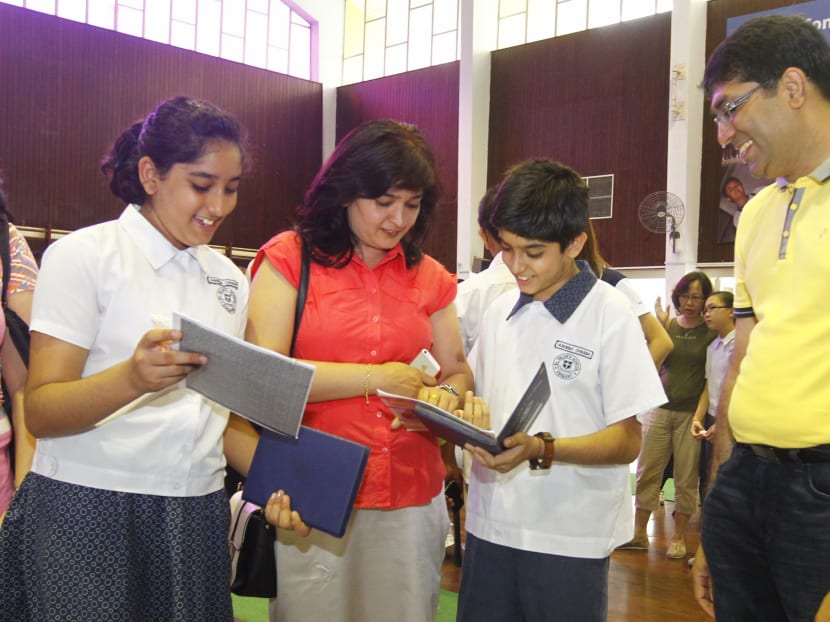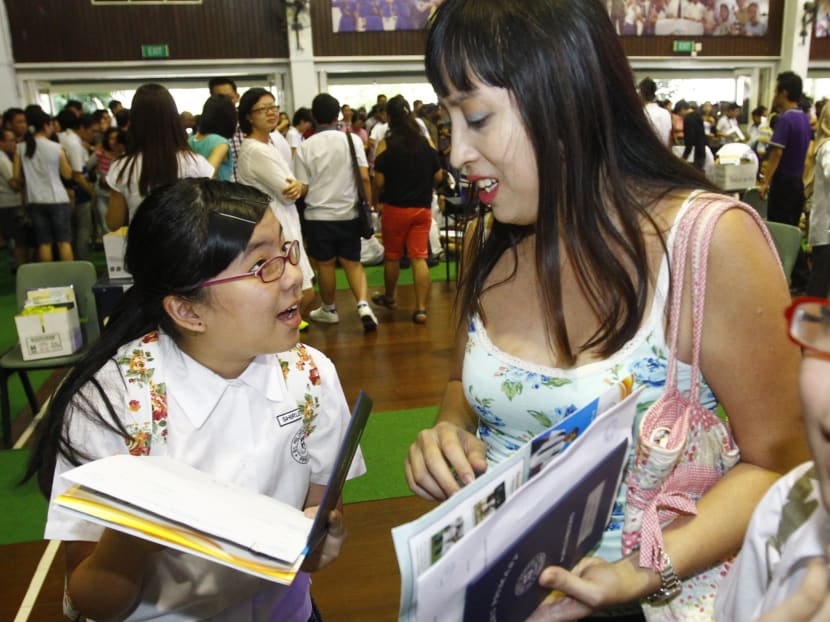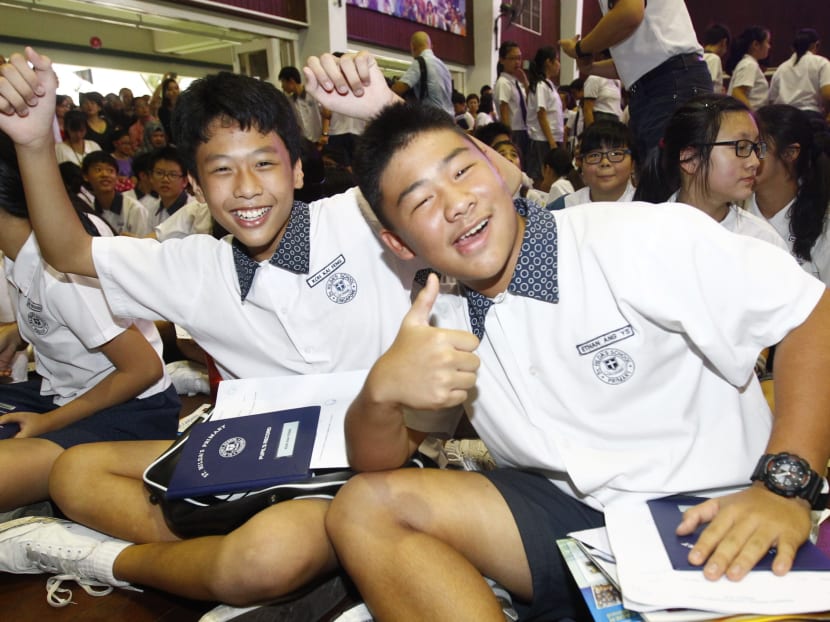2 in 3 students made Express stream; highest in a decade
SINGAPORE — Two in three students who took the Primary School Leaving Examination (PSLE) this year qualified for the Express stream, making the success rate the highest in over a decade. Of the cohort of 43,047 students, 66.7 per cent made it to the Express stream, a slightly higher proportion than last year when 63.1 per cent of the students achieved the feat.



SINGAPORE — Two in three students who took the Primary School Leaving Examination (PSLE) this year qualified for the Express stream, making the success rate the highest in over a decade. Of the cohort of 43,047 students, 66.7 per cent made it to the Express stream, a slightly higher proportion than last year when 63.1 per cent of the students achieved the feat.
Almost 20 per cent of the students made it to the Normal (Academic) stream and 10.9 per cent to the Normal (Technical) course. There were 1,073 students, or 2.5 per cent of the cohort, who did not make it to secondary school.
Education Minister Heng Swee Keat said some of the PSLE questions this year were crafted differently to guide the students’ thinking. “Students told teachers they felt the papers gave them a chance to do well, and they felt confident about their learning. This is exactly what we want — to bring everyone’s focus back from chasing points to really learning,” he wrote on his Facebook page after results were released yesterday.
This year, the Ministry of Education broke away from printing the top and lowest PSLE aggregate scores on the result slip, in a further move to reduce the emphasis on academic results. Last year, the MOE stopped naming the top PSLE scorer to shift the focus away from academic achievements.
In line with these moves, several schools — including Changkat Primary, Nanyang Primary, Princess Elizabeth Primary, St Hilda’s Primary and Temasek Primary — recognised students who scored an aggregate PSLE score of 250 and above, usually taken as the qualifying mark for the sought-after Integrated Programme schools. Those who did well in foundation subjects were also recognised, as well as students who overcame the odds to do well at the national exam.
“We want to celebrate good achievements, but more importantly, we want to celebrate pupils’ good effort according to their abilities and talents,” said Temasek Primary principal Francis Foo.
While most parents applauded the ministry’s move to blackout the top and lowest PSLE aggregate scores, some parents suggested listing the top score. Part-time teacher assistant Josephine Rexy, 37, whose son is hoping to enter Raffles Institution, said, “We can at least have an idea (of what the top score) if we can apply to (a particular) school”.
Senior corporate communications manager Ng Koon Ling shared her daughter’s suggestions. She said, “(By publishing only the top score), higher achievers can be encouraged by their efforts, but the lower achievers do not have their self-esteem crushed.”
The absence of the highest and lowest scores on the results slip would not really affect the selection of secondary schools, said St Hilda’s Primary School principal Kew Mee Ying.
“The selection of schools (can) be based on for example, last year’s cut-off points,” said Mdm Kew. Still, she cautioned against using cut-off points as the sole yardstick.
“Each year’s cut off is determined by the last child that gets into the school. That’s why it should not be the main determining factor, rather, if parents think that they would like to try, to put their child in the particular school, if they are not too far away from that cut-off – which is just a gauge – they should try it.” - Additional reporting by Siau Ming En, Kenneth Cheng and Tiara Hamarian






